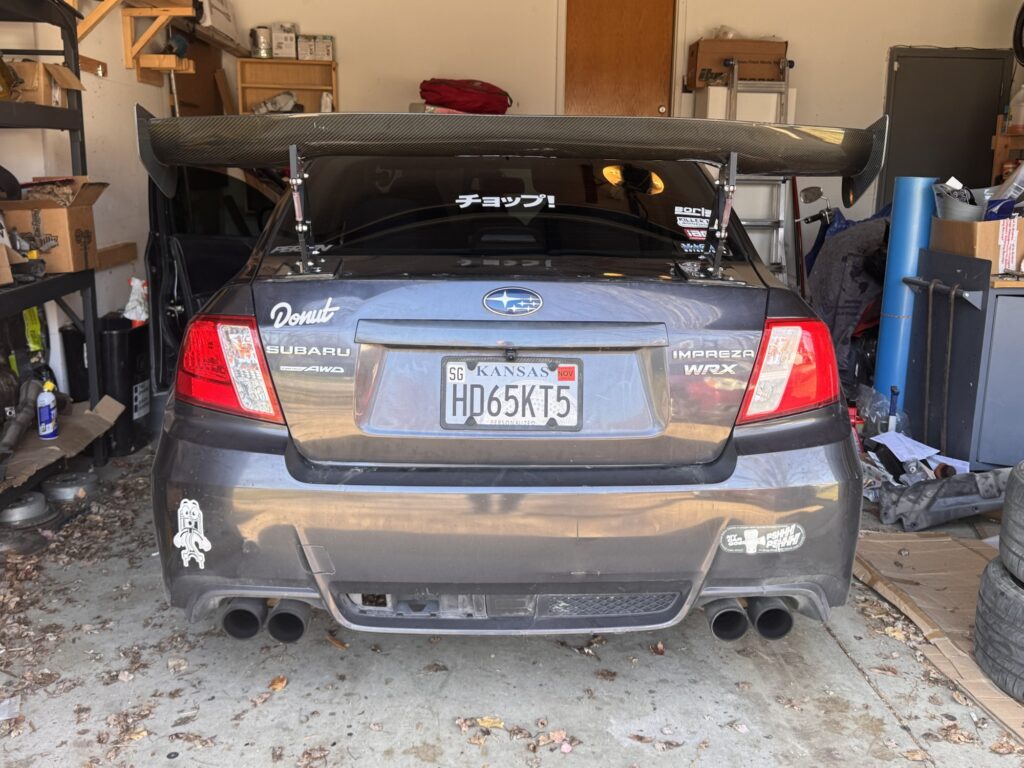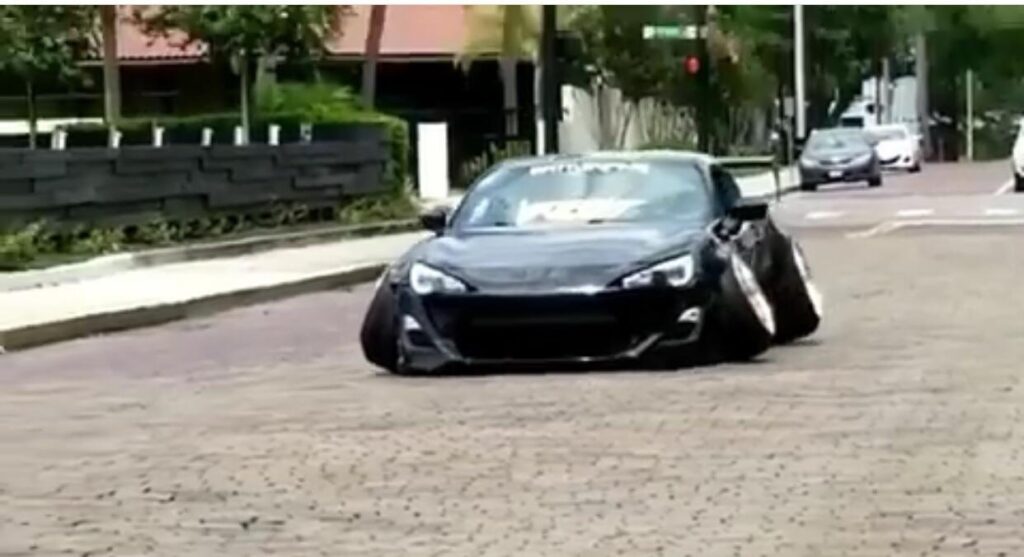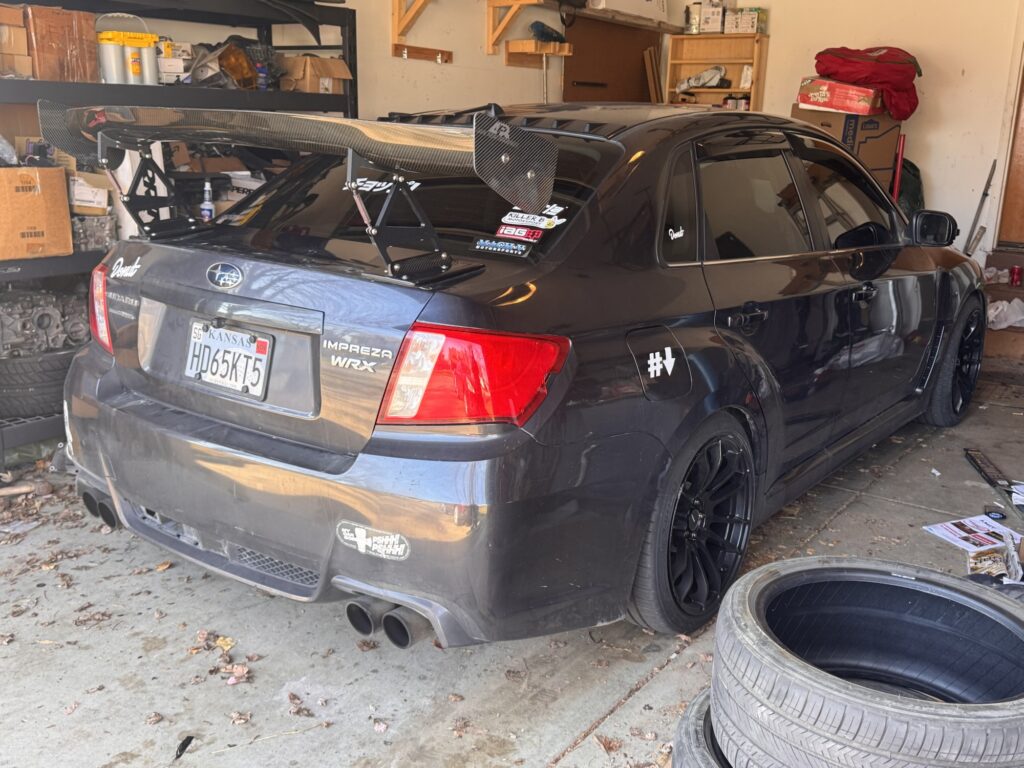Something a little different for you today:

After letting it sit in my garage for 6-8 months, I finally got the nerves to drill holes in my trunk and installed Big Wang™ the night before Thanksgiving.
This is the Carbon Fiber APR Performance GTC-200 aero package for my 2013 Subaru Impreza WRX. I got it from a guy working on going back to stock for trade for a trunk lid minus the drill holes.
Haven’t really had the chance to really test out rear stability in the ways I’ve wanted to.
Went to my favorite place ahem ‘down Mexico way’ and put it through a shakedown.
In previous scenarios, I have experienced the rear trying to pop out on me, and traction control kicking in, pulling power from the wheels breaking their grip on the pavement and snapping me back into a straight line.
With traction control turned off, I would have to let my foot out of the accelerator and quickly counter steer, or as you learn in Driver’s Ed and everyone experiences when it snows: turn into the slide to catch the rear tires before they spin you out.
In repeating those exact same scenarios, this time the rears stayed planted, and I wasn’t even close to the limit, the limit being where the tires lose traction and begin to slide. Testing at velocities +30MPH than previous attempts proved stable.
Big Wang™ is now more likely to induce understeer than oversteer, which means tuning the front suspension to accommodate.
For those that understand this: I run a neutral camber on the fronts, and -2 degrees in the back, for both rear stability and to fit the 255/35R18s under the fender wells without having to roll them.
Camber is the angle of the tire leaning in or out from the car if you were looking at the car straight-on from the front or back. My front tires are essentially straight up and down, and my rear tires are visibly leaned into the car.

On modern vehicles, they typically have 1 degree negative camber for maximizing traction in corners, as when the vehicle leans into a corner, the tire then maximizes its contact patch on road, with the weight of the vehicle pressing the tire wholly into the pavement. Neutral camber is a bit unusual, but I’ve run it since I lowered the car 1.5” for lowered…reasons.
My plan is to soften the rigidity of the shocks up front (they have an adjustment on the valving allowing to adjust stiffness), coupling that with adjusting the sway bar to the springier, softer selector option, and maybe introduce a half to a full degree negative camber in the front to compensate.
I much prefer a ‘pointier’ car that is more likely to oversteer, versus an understeering sled in a corner where I turn the steering wheel and nothing happens.
More simply: In a turn, if something is going to break loose and start sliding, I’d rather the rears slide out on me, allowing me to counter-steer (oversteer), versus turning into a corner and the car not responding and continuing to slide forward (understeer).
With traction control turned on with an all-wheel drive (AWD) car, that sudden change in wheel speed in the fronts is a terrifying, unpredictable experience that could be dangerous even in the most experienced hands. With it turned off, it’s not a great feeling to feel the vehicle sliding away from the apex of the corner when you’re trying to hold the line, and in tighter conditions, less ideal.
In professional circles, some racers like a slight bit of understeer.
Those guys traditionally finish behind the champions.
ahem
But I digress.
If I can get it right, the ultimate goal is to get the turns to be neutral; then it’s just turn in, hold throttle in the long sweep, with smooth inputs of the steering wheel through the curve versus small adjustments through the turn to prevent the car from snapping the rears out and turning it into a drift session.
Zero interest in that.
I mean, it’s not like I have the torque or horsepower for that to happen anyway.
Yet.
Insert more digression here.
But!
I have the proof: Big Wang™ does its job, and looks preposterously, ridiculously fun while doing it.

Have a great weekend everyone.
